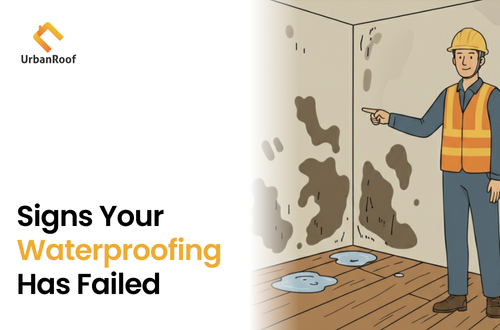Common Causes of Roof Leaks and How to Identify Them in Indian Homes
Roof leaks remain one of the most frequent and distressing problems faced by homeowners across India, especially during the monsoon season. With varied climates and diverse roof types, timely identification of roof leak sources prevents water damage, expensive repairs, and health risks such as mould and mildew. This guide focuses on the unique problems experienced in Indian households and offers practical advice for long-term home protection.
Why Early Roof Leak Detection Matters
In India, unpredictable rainfall, humidity, and changing temperatures accelerate wear on roofing materials. Spotting leaks early helps avoid escalation, keeping ceilings, walls, furniture, and electrical appliances safe.
Unaddressed roof leaks can lead to:
- Structural weakening
- Damage to interiors and décor
- Increased repair and maintenance costs
Key Signs of Roof Leaks in India
- Stains or damp patches on ceilings and walls, often yellowish-brown or grey
- Cracks appearing after heavy rain, especially in older homes
- Peeling paint or flaking plaster in top-floor rooms
- Mould growth in corners, attics, or near terrace drains
- Visible gaps, broken tiles, or missing sections in roofing
- Dampness near skylights, chimneys, or vent pipes
- Dripping sounds or wet patches during or after rain
Tip: Regular inspections, especially before and after the monsoon season, help catch these signs early.
Common Causes of Roof Leaks in Indian Homes
1. Weather and Climate Impacts
India’s climate — from tropical humidity to high-altitude cold — puts roofing systems under stress. Intense sun degrades materials, sudden rains reveal hidden vulnerabilities, coastal regions face salt-induced corrosion, and northern states deal with snow/freezing cracks.
2. Ageing Materials and Wear
RCC slabs, clay tiles, and metal sheets deteriorate over time due to sun, rain, and temperature swings. Expired waterproofing or sealants cause leaks, often visible after 8–10 years.
3. Poor Roof Slope and Drainage
Flat or shallow-sloped roofs (common in Indian homes) cause water pooling. Without proper slope and drainage, cracks and seepage develop faster. Terrace outlets must always remain unclogged.
4. Blocked Gutters and Valleys
Dust, debris, and leaves clog gutters/valleys, forcing water into roof joints. Regular cleaning is essential to prevent backup during heavy showers.
5. Poor Concrete Compaction and Hairline Cracks
Weak concrete density and untreated hairline cracks allow moisture seepage, damaging slabs and ceilings below.
6. Damaged or Unsealed Flashing
Metal flashing at joints can rust, loosen, or crack. Poor installation or missing nails create leaks around roof edges, vents, and parapet walls.
7. Cracked or Broken Roofing Materials
Clay tiles, fiber-cement sheets, or RCC slabs often crack due to monsoon winds, falling branches, or aging. Missing or broken sections allow direct leakage.
8. Faulty Skylight and Chimney Installation
Improper fitting or aging of skylights/chimneys leaves gaps for water entry, often visible as stains near these zones.
9. Lack of Waterproofing Membrane
Absence or deterioration of waterproofing layers allows seepage. Professional application and renewal every few years ensures lasting protection.
How to Proactively Prevent Roof Leaks
- Schedule roof inspections and waterproofing assessments before monsoon
- Keep terrace outlets and drainage unclogged
- Use high-quality, weather-appropriate materials
- Fix even minor cracks during maintenance
- Apply professional waterproofing coatings every few years
When to Call a Professional?
DIY fixes may work for minor leaks like clogged drains. But if you notice persistent moisture, recurring leaks, or structural damage, call an expert.
Professional intervention assures accurate diagnosis, warranty-backed repairs, and long-term waterproofing designed for Indian climate and construction standards.
UrbanRoof: Your Expert in Roof Leak Solutions
For Indian households seeking lasting protection from roof leaks and seepage, UrbanRoof offers specialized inspection, repair, and waterproofing services.
- Expertise in flat terrace leaks and monsoon seepage
- Engineer-led diagnosis and thermography inspections
- Use of industry-leading waterproofing materials
- Tailored solutions for Indian homes and apartments
Booking an inspection before the rainy season is the smartest step to avoid expensive damage and hassles.
Book an Inspection with UrbanRoof Today
A precaution now can save years of repair and water damage in the future.




